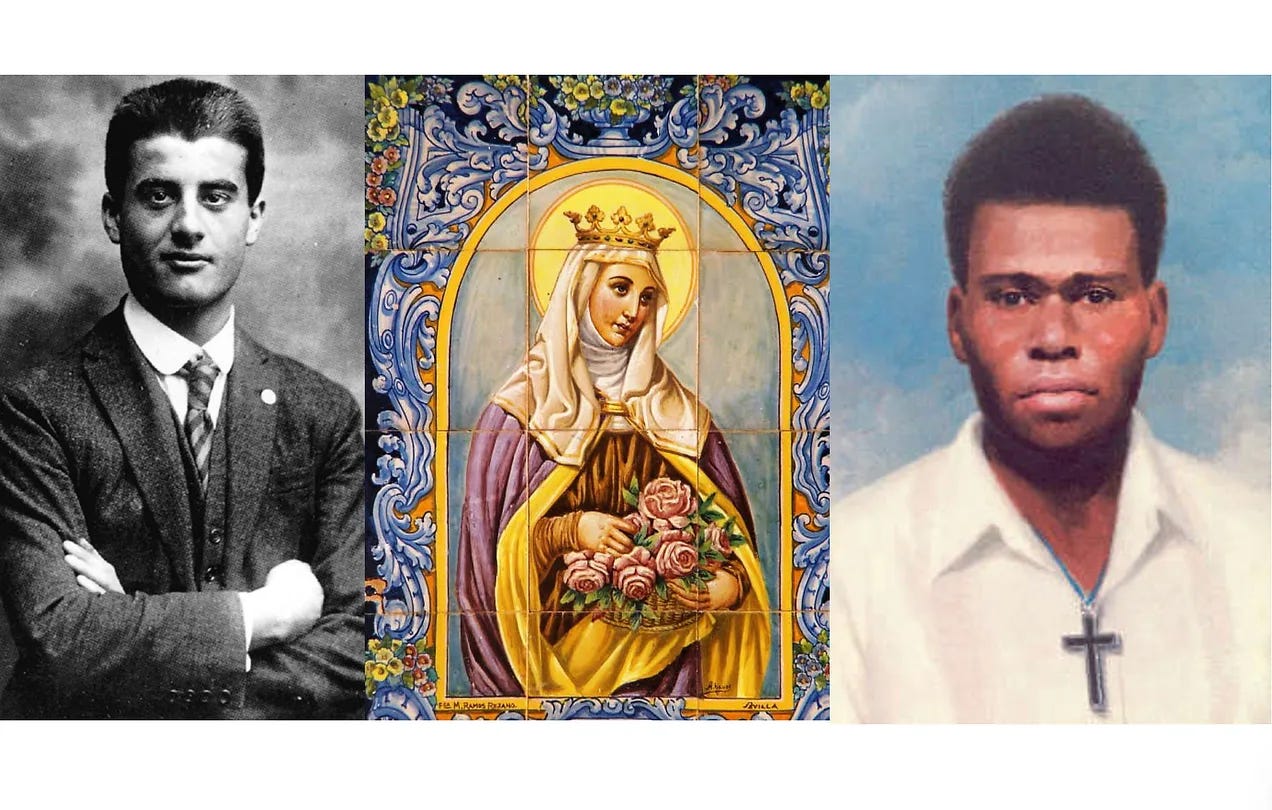The word “Catholic” literally means “universal.” In the ancient Christian Niceno-Constantinopalitan creed, we profess our belief in “one, holy, catholic, and apostolic Church.” That is because the Gospel of Christ is for everyone, without exception—God wishes all men to be saved, if they will accept His commandments and teachings.
In fact, Jesus’s parting command to His disciples before He ascended into Heaven was (Matt. 28:19-20), “Going therefore, teach ye all nations; baptizing them in the name of the Father, and of the Son, and of the Holy Ghost. Teaching them to observe all things whatsoever I have commanded you.” Many have heeded that command of Christ, from the apostles right up to our present day, evangelizing the non-Christians around them or even traveling to dangerous foreign countries to spread the good news of Jesus.
Three saints whose feast days are July 4 and 7 illustrate the truth that saints—the holiest Christian Catholics in history, held up as examples to others—come from every continent, ethnicity, background, and vocation.
St. Elizabeth of Portugal was a medieval European queen who was surrounded by Catholic Christians her whole life, but whose evangelization consisted in reforming her sinful husband and bringing peace multiple times to her family and her nation. Bl. Peter To Rot was a 20th-century Papua New Guinea husband, father, and catechist who inspired many others to sincere practice of Catholicism and who was martyred for his faithfulness to Christ. Bl. Pier Giorgio Frassati was also a modern saint, dying in 1925, a fun-loving but very charitable youth who died when he was only 24.
St. Elizabeth of Portugal (July 4) was married at age 12 to King Denis of Portugal, a womanizer. Besides helping the poor, Elizabeth converted her husband and made peace between her warring son and son-in-law (d.1336).
Bl. Pier Giorgio Frassati (July 4) was a pious Italian youth who joined the St. Vincent de Paul Society and Catholic Action, cared for the poor, and studied mining engineering. A lover of practical jokes, sports, and mountain climbing. He was not allowed to marry the woman he loved and died young in 1925.
Bl. Peter To Rot (July 7) was a 20th century husband and father in Papua New Guinea, a catechist who assisted missionaries. During WWII, the Japanese occupied the island, persecuted Christians, and tried to reintroduce polygamy. Peter protested and was imprisoned and suffocated to death by the Japanese.
Elizabeth, Peter, and Pier Giorgio each faced great disappointments and hardships in their lives. Elizabeth of Portugal was a princess, but her marriage was no fairytale. Peter To Rot was loved and respected by everyone who knew him, but he was murdered. Pier Giorgio Frassati was not able to marry the girl he loved, and he died very young. But yet all these saints never stopped loving God. They did not allow sorrow and suffering to turn them bitter.
And they never stopped spreading the messages of the Gospel. In their radically different situations and centuries, each of these saints truly fulfilled Jesus’s command and helped ensure the universality of Catholic Christianity.




